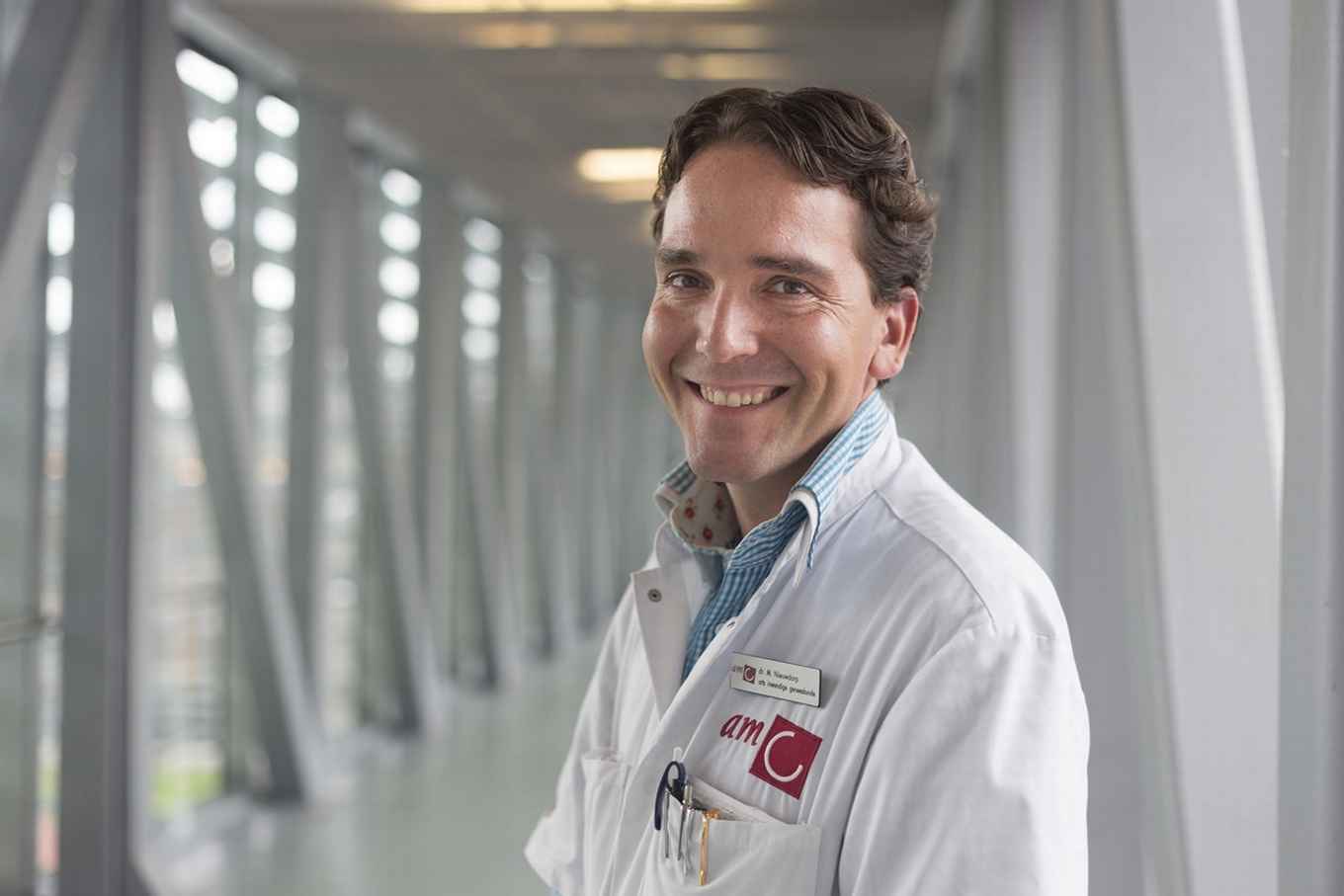Max Nieuwdorp, professor of Internal Medicine
23 September 2015

Max Nieuwdorp works as an internist and endocrinologist at the AMC-UvA and conducts research into the role of intestinal bacteria in the development of diabetes, fatty liver (steatosis) and cardiovascular disease. Besides being the director of the Academic Medical Center’s diabetes unit and laboratory for Experimental Vascular Medicine, Nieuwdorp also works as a diabetes researcher at the VU University Medical Center Amsterdam and is visiting professor at the University of Gothenborg’s Wallenberg laboratory. By making use of fecal transplants, Nieuwdorp investigates the causal role of intestinal bacteria that are involved in the emergence of the aforementioned diseases and whether it is possible to use specific treatment (by replenishing such bacterial strains through liquids or eliminate pathogens via vaccination) to influence, or even prevent, the course of these diseases.
Nieuwdorp has been working at the AMC-UvA since 2012, where he has since then also become principal investigator. He is currently supervising a group of 12 PhD candidates and three postdoctoral researchers who are doing research on the issues mentioned above. Nieuwdorp is the recipient of various grants, including a 2014 Vidi grant from the Netherlands Organisation for Scientific Research (NWO), and forms part of several national (CVON) and international (FP7) research consortiums.
In the coming period, Nieuwdorp will focus on the initiation of an Amsterdam diabetes centre, in which high-quality care will be combined with translational research and teaching with the aim of decreasing levels of morbidity and mortality in this rapidly increasing number of patients